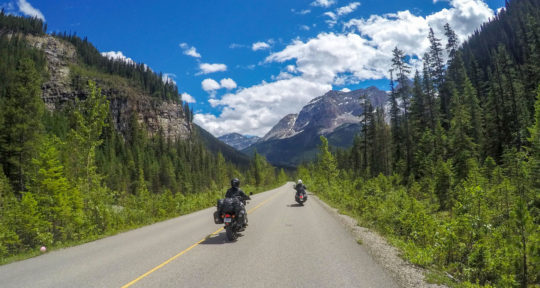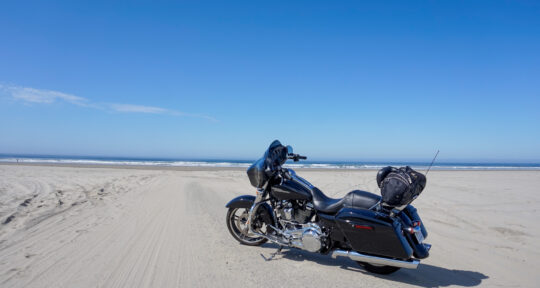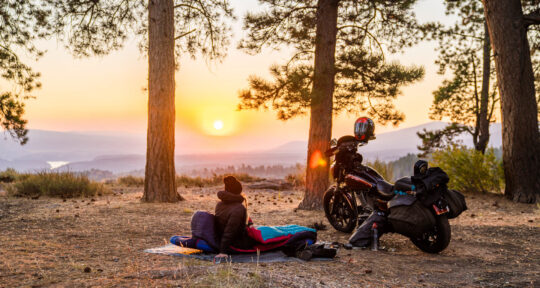In the 2020 documentary series Long Way Up, actor-friend duo Ewan McGregor and Charley Boorman made their way through South and Central America—a 13,000-mile journey—on a couple of electric motorcycles. The bikes were highly customized “near-production” versions of Harley-Davidson’s all-electric, urban-focused LiveWire motorcycle, and they were accompanied by two prototype Rivian R1T trucks.
The show started filming in 2019, and while much of what went on behind the scenes obviously didn’t make it onto the screen, many viewers came away with the same conclusion: The world of international motorcycling wasn’t quite ready for an electric adventure bike then.
Fast forward to late 2022, and electric motorcycle manufacturer Zero has just launched the DSR/X, described by the company as “the world’s first electric adventure sport bike.”
So what, if anything, has changed?
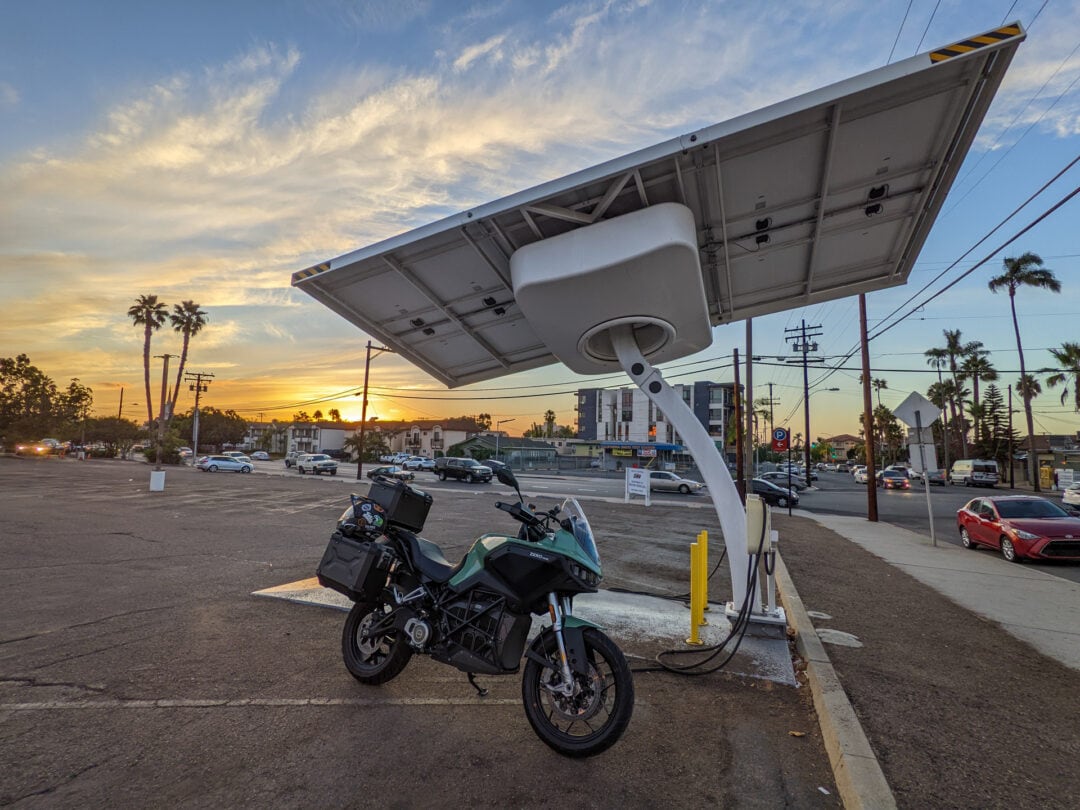
Adventure vs. electric motorcycles
While much of the motorcycle industry has been battling flat or declining sales for years, adventure riding is on a steady incline. Also commonly referred to as adventure touring or ADV, it’s a fast-growing segment focused on taking the road less traveled. ADV motorcycles are rugged, capable machines designed to tackle both pavement and off-road terrain while carrying everything the rider needs for a multi-day (or longer) overlanding adventure.
While BMW and KTM have long been the market leaders, almost every major motorcycle manufacturer has thrown its hat in the ADV ring in recent years in order to compete for this highly desirable audience.
Adventure motorcycling is growing in popularity as a major player enters the field
Early adopters of electric motorcycles, on the other hand, typically use them for urban riding and commuting. If you live in a city and climate that makes motorcycle commuting possible for most of the year, it’s a quick, easy, and eco-friendly way to get to work at an extremely low cost, beyond the vehicle purchase price. Just plug the motorcycle into a regular wall outlet overnight, and you’ll essentially never have to find a commercial charging station.
But while they’re fast and fun to ride, taking a longer road trip on an EV motorcycle is not as easy as a trip to the office or grocery store. Most electric bikes on the market today are built with aerodynamics in mind; they’re smaller-framed, sit lower to the ground, and feature a forward-leaning riding position in order to increase battery life. Motorcycle batteries are smaller than those found in electric cars, and they’re unable to provide the same range. This combination doesn’t necessarily translate well into epic, multi-day adventures off the grid.
With the launch of its new adventure bike, Zero is attempting to change this.
Electrifying the backcountry
Zero Motorcycles was founded in 2006 in Santa Cruz, California, by a former NASA engineer. Although the company now operates in more than 40 countries, everything is still designed, built, and assembled in California. The DSR/X isn’t Zero’s first off-road-focused bike, but it is its first full-size adventure motorcycle.
“It’s really cool because every time we launch a motorcycle, it’s transportation history,” says Dan Quick, director of communications at Zero.
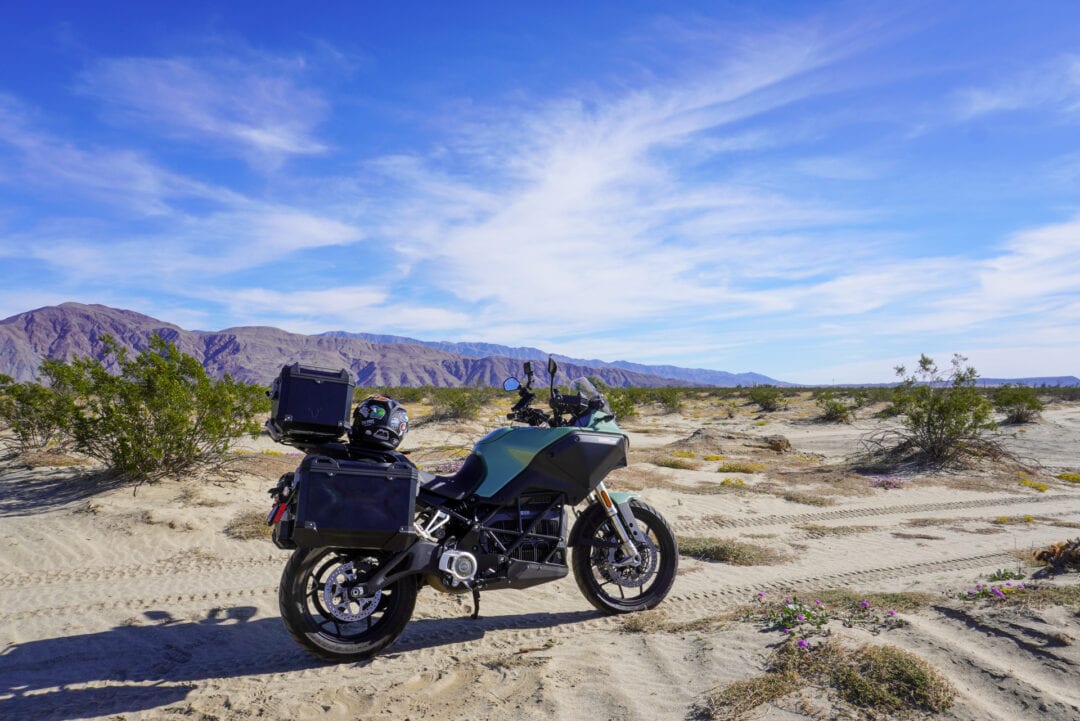
In another first for an EV company, Zero recently announced a partnership with BDR, or Backcountry Discovery Routes, an adventure motorcycling non-profit. The organization works with communities, government agencies, and industry partners to create multi-day backcountry motorcycle routes on public lands across the U.S. “People who ride our routes see parts of the country that they would never see if they weren’t riding a motorcycle,” says Inna Thorn, executive director at BDR.
A typical BDR is around 1,000 miles long, give or take a few hundred miles, and stretches through an entire state or region. The routes are designed to be traveled over multiple days, mainly on remote, scenic trails. As part of the partnership with Zero, all digital BDR maps now feature an added layer showing charging stations within 25 miles of each route.
A big part of the BDR mission is to drive business to the small communities along the routes, many of which are remote with limited economic opportunities. “Sometimes there’s like 20 people who live there, and they’ve lost mining or forestry—basically, the economy’s gone,” Thorn says. “But all of a sudden, a BDR route goes through their little town, and it brings enormous economic stimulus. We’re buying gas, we’re stopping at restaurants, staying in hotels.”
The ultimate guide to motorcycle road trips
Some towns are so small, they don’t even have a gas station—but there might be a restaurant or general store with an outlet for plugging in an electric motorcycle for a few hours, while the rider spends some money on food or supplies. “The small towns that want to attract outdoor recreationalists will be positively affected if there’s a charging station,” says Thorn.
She points out that BDR as an organization is not out there building charging stations, or even altering its routes to better suit electric motorcycles—a market that is still a negligible part of the larger adventure touring space.
“We’re not catering to any specific motorcycle brand or any technology, we’re just expanding opportunities for people to explore the backcountry on any bike that they choose,” Thorn says. “If they want to ride an electric bike, we’re there, and we will work hard to make those opportunities even more accessible to people and bring economic stimulus to these rural communities.”
A use case for electric ADVs
I recently had the opportunity to test out a DSR/X for myself, and for someone who’s used to gas-powered motorcycles, it’s a completely new experience. The elephant in the room when discussing EVs in general, and e-motorcycles in particular, is the issue of range.
For street riding, the 544-pound DSR/X gets between 85 and 180 miles per charge, according to the company’s own numbers. In my experience, riding a fully loaded bike with luggage on a mix of freeway and mountain roads, I was getting around 110 miles out of a full charge. But while the range may be limited at freeway speeds, it can more than double when getting off the pavement. And in some ways, electric bikes might even be better suited for off-road riding than traditional motorcycles.
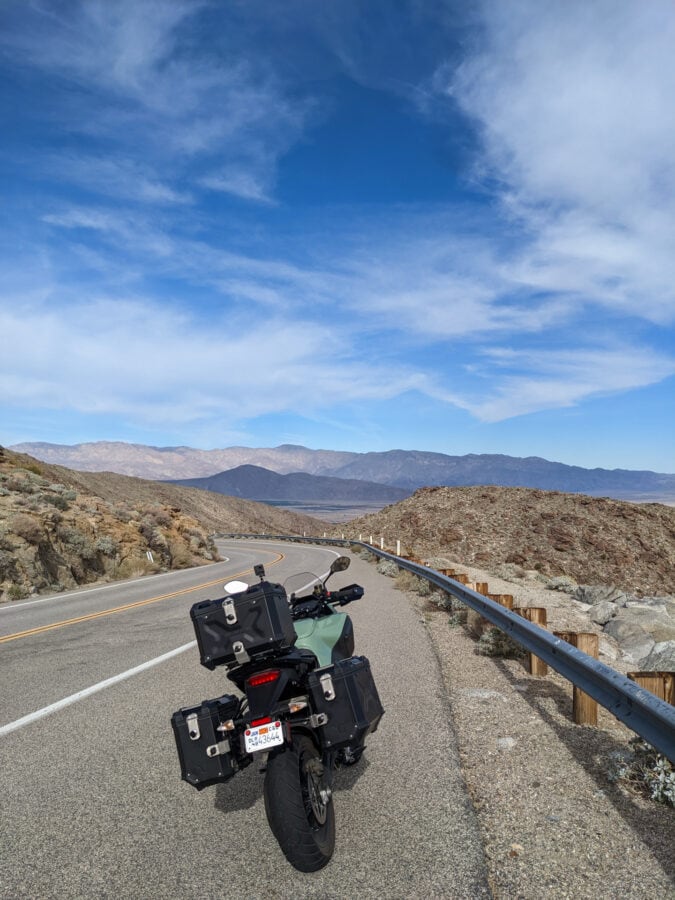
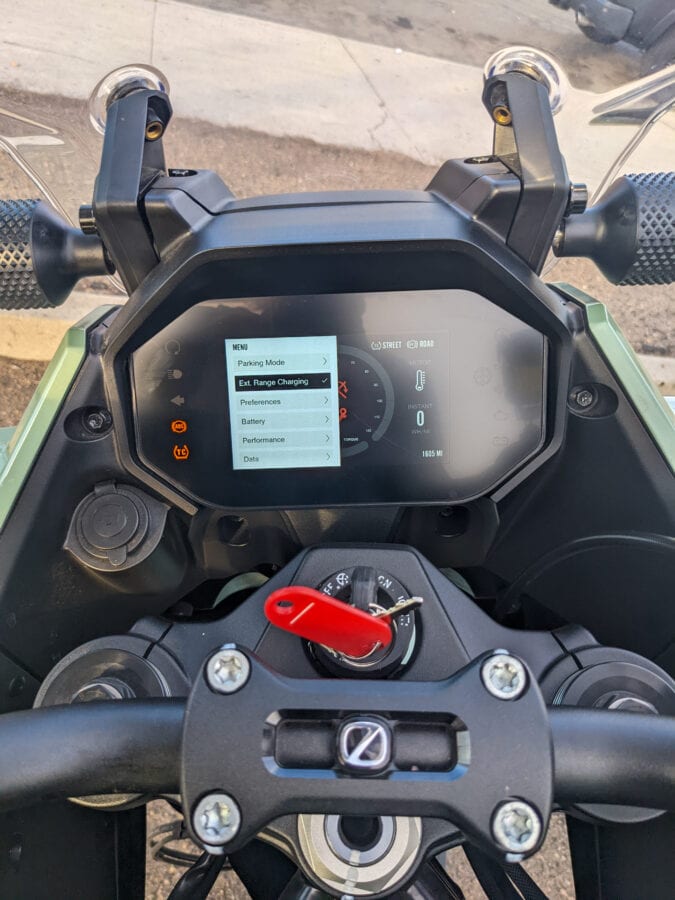
On the DSR/X specifically, the low center of gravity (due to battery weight and placement) combined with not having to worry about shifting (due to the lack of a traditional, multi-speed transmission) surely benefit off-road riders. Add to that the regenerative braking—which I personally found extremely helpful when riding through deep sand—high ground clearance, reverse mode, and customizable traction control, and you have a motorcycle that actually helps eliminate some of the barriers to entry for ADV riding.
But there are still some obvious downsides to taking an electric motorcycle on a longer adventure. While the range is surprisingly good off road, you still have to make it to the trailhead first. Charging a battery takes much longer than filling up a gas tank. And fast chargers may be limited or non-existent in remote areas.
How to find EV charging stations on a road trip
“If you’re not traveling to your adventure, then the DSR/X has far more adventure in it than I think the average rider would suspect,” Quick says. “If you’re driving to your adventure, obviously things change.”
When it comes to electric adventure riding, tackling a BDR might actually be the perfect use case, at least in theory: Stay in hotels where you can charge the bike overnight, arrive at each day’s section with a full charge in the morning, and ride no more than a couple hundred miles of trails per day. Add a recharge at your lunch stop and you should—theoretically—make it to your destination each day without issue. Of course, all this requires a certain level of planning and, for most riders, a significant shift in mindset.
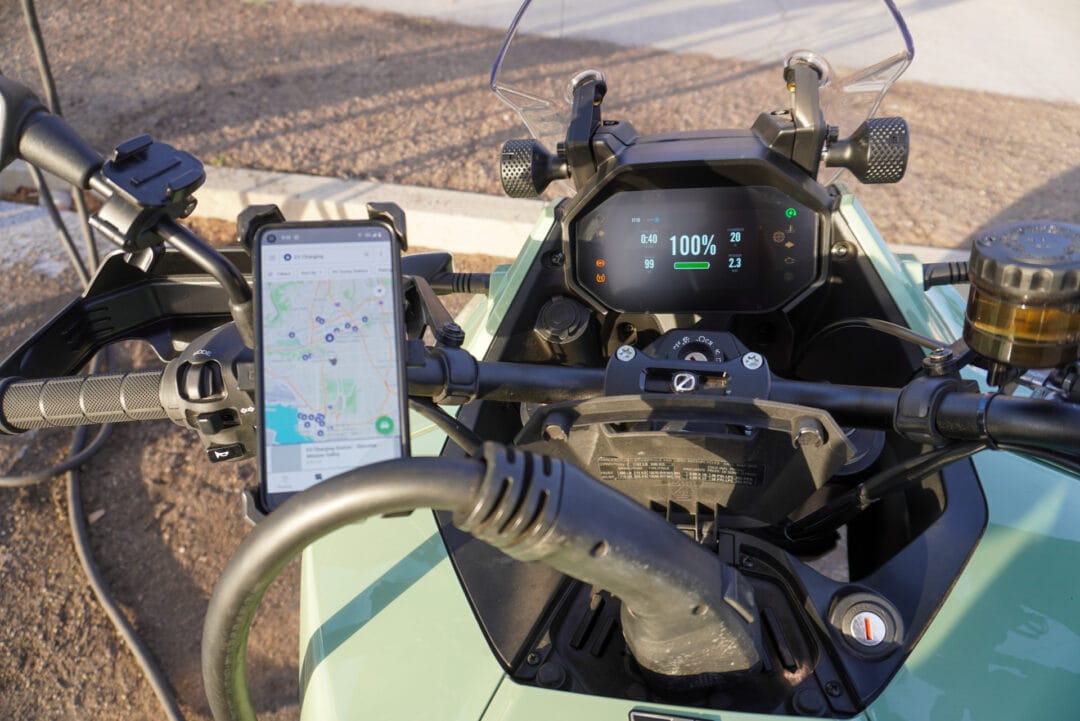
“Let’s be realistic,” Quick says. “If you want to be able to ride forever and not ever have to worry—maybe it’ll get there, but [the DSR/X] probably isn’t it today. If you’re okay with investing the time to just plan out your route a little differently than you’re accustomed to, but the reward is going to be a ride experience you’ve never had, then it’s absolutely an option for you.”
An exciting start
A lot has happened in electric motorcycling since McGregor and Boorman tackled the Pan-American Highway in 2019, from charging stations becoming more ubiquitous to a number of new manufacturers and models entering the scene. With the launch of the DSR/X, Zero has no doubt helped usher in a new era of adventure riding. Things like range, battery size, and charging speed still need to improve in order to allow the same level of freedom as hitting the road on a gas-powered bike, but things are clearly moving in the right direction.
“The amount of kilowatts that you can pack underneath a rider and still have it be a motorcycle is increasing,” Quick says. “The amount of miles you can get out of each kilowatt is increasing, and the cost per each kilowatt is decreasing.”
The DSR/X might not be all the way there yet—but if you ask me, it’s a pretty exciting start.
